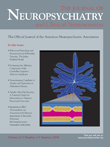Clozapine-Induced Negative Myoclonus is not Cataplexy
To the Editor: Desarkar et al. 1 describe a patient who developed negative motor symptoms (sudden knee-buckling and dropping of objects) while taking clozapine. Similar cases have been reported by others, 2 and I have seen several cases as well. This phenomenon has been termed incorrectly cataplexy. True cataplexy is “specific to narcolepsy and … characterized by a sudden drop of muscle tone triggered by emotional factors.” 3 Because clozapine-related intermittent loss of muscle tone is not preceded by strong emotion, and occurs in patients demonstrating no other evidence of narcolepsy (nor any evidence of a brainstem or hypothalamic lesion known to produce rare cases of secondary cataplexy 3 ), it is inaccurate on purely semantic grounds to call this phenomenon cataplexy. A more accurate term is negative myoclonus, which has been defined as “a motor phenomenon characterized by involuntary jerky movement due to brief, sudden interruption of muscle activity.” 4 Negative myoclonus can be seen in clinical conditions ranging from epilepsy to toxic-metabolic encephalopathies such as hepatic encephalopathy (in which case it is known as asterixis). 4
Accurate terminology points the way toward better understanding the pathophysiology of clozapine-induced negative myoclonus. It is important to consider the possibility that clozapine-induced negative myoclonus, like clozapine-induced positive myoclonus, could be an epileptic phenomenon predictive of the development of other seizure types including generalized tonic-clonic convulsions. 5 In Desarkar et al.’s 1 study, the patient’s nonepileptiform EEG does not rule out epilepsy; EEG is incompletely sensitive for epilepsy, and specialized back-averaged electromyography/EEG studies (not widely available) may sometimes be necessary to detect subtle epileptic discharges associated with negative or positive myoclonus. 4 If clozapine-induced negative myoclonus is actually an epileptic phenomenon, it might be expected to improve with certain antiepileptic medications (e.g., ethosuximide) but worsen with others (e.g., carbamazepine, phenytoin). 6
Nonepileptic etiologies for clozapine-induced negative myoclonus must also be considered. As noted by Desarkar et al., 1 abnormalities in neurotransmitter systems, including the orexin system known to be associated with narcoleptic cataplexy, 3 may also play a role in clozapine-induced negative myoclonus. Asterixis is also a potential explanation for Desarkar et al.’s patient, whose high serum valproate level (assuming the units were μg/ml—not μg/dl as printed) either alone or in combination with clozapine could have contributed to a subtle toxic-metabolic encephalopathy.
It is hoped that this clarification of terminology will facilitate integration of research findings from different areas of neurology (epilepsy, sleep disorders, movement disorders) to provide further insight into the pathophysiology of clozapine-induced negative myoclonus.
1. Desarkar P, Goyal N, Khess CR: Clozapine-induced cataplexy. J Neuropsychiatry Clin Neurosci 2007; 19:87–88Google Scholar
2. Chiles JA, Cohn S, McNaughton A: Dropping objects: possible mild cataplexy associated with clozapine. J Nerv Ment Dis 1990; 178:663–664Google Scholar
3. Dauvilliers Y, Arnulf I, Mignot E: Narcolepsy with cataplexy. Lancet 2007; 369:499–511Google Scholar
4. Tassinari CA, Rubboli G, Gardella E: Negative myoclonus. Clin Neurosci 1995; 3:209–213Google Scholar
5. Sajatovic M, Meltzer HY: Clozapine-induced myoclonus and generalized seizures. Biol Psychiatry 1996; 39:367–370Google Scholar
6. Oguni H, Uehara T, Tanaka T, et al: Dramatic effect of ethosuximide on epileptic negative myoclonus: implications for the neurophysiological mechanism. Neuropediatrics 1998; 29:29–34Google Scholar



